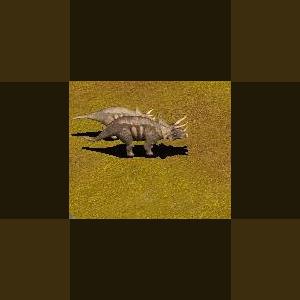About This File
Arrhinoceratops belonged to the Ceratopsinae (previously known as Chasmosaurinae) within the Ceratopsia (the name is Ancient Greek for "horned face"), a group of herbivorous dinosaurs with parrot-like beaks which thrived in North America and Asia during the Cretaceous Period, which ended roughly 65 million years ago. It appears to be closely related to Torosaurus.
Since this dinosaur is known only from its skull, scientists know little about its over-all anatomy. The skull features a broad neck frill with two oval shaped openings.
Its brow horns were moderately long, but its nose horn was shorter and blunter than most Ceratopsians
Its body is assumed to be typical of the Ceratopsians, and based on the skull it is estimated to be 6 m (20 ft) long when fully grown.
Arrhinoceratops, like all Ceratopsians, was a herbivore. During the Cretaceous, flowering plants were "geographically limited on the landscape", and so it is likely that this dinosaur fed on the predominant plants of the era: ferns, cycads and conifers. It would have used its sharp Ceratopsian beak to bite off the leaves or needles.



Recommended Comments
There are no comments to display.
Create an account or sign in to comment
You need to be a member in order to leave a comment
Create an account
Sign up for a new account in our community. It's easy!
Register a new accountSign in
Already have an account? Sign in here.
Sign In Now